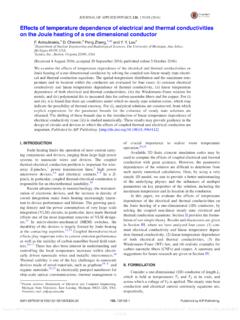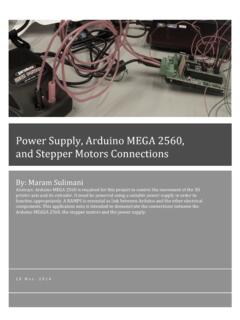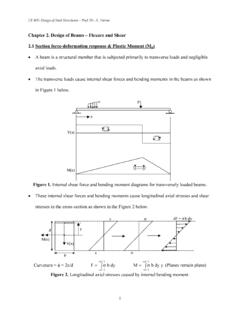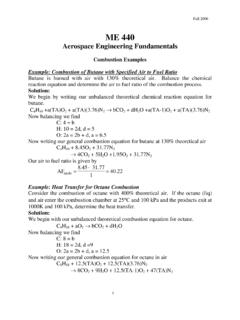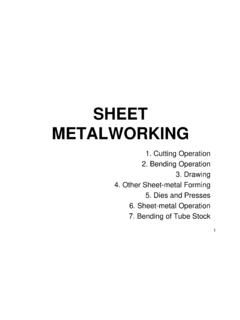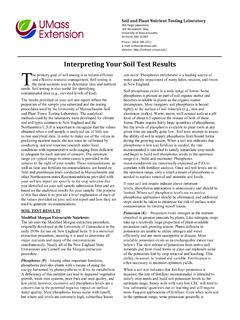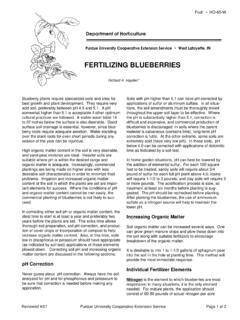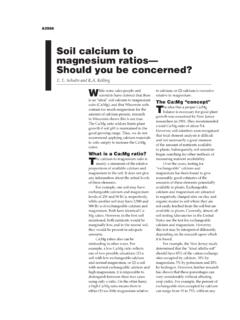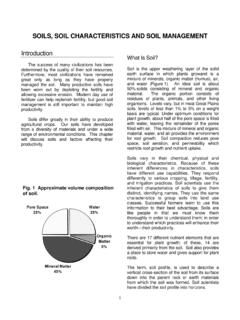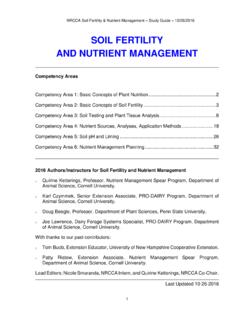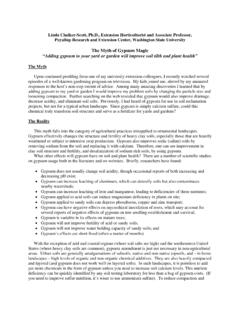Transcription of CHEMICAL PRECIPITATION: WATER SOFTENING
1 I CHEMICAL PRECIPITATION: WATER SOFTENING Submitted to: Dr. Hashsham Research Complex Engineering Department of Civil and Environmental Engineering Michigan State University East Lansing, MI 48824 Authors Dipa Dey Amanda Herzog Vidya Srinivasan ENE 806 May 2, 2007 ii Acknowledgement We are grateful to Dr. Syed A. Hashsham for his invaluable guidance and support during the course of this project. We would also like to thank Mr. Joseph Nguyen for his assistance and cooperation. Dipa Dey May 2, 2007 Amanda Herzog Vidya Srinivasan iii CONTENTS Caption Page No.
2 Title page i Acknowledgement ii Contents iii List of Figures and Tables iv Abstract 1 Introduction 2 Chemistry of Hardness Removal Process 3 Objective 5 Methods and Materials 5 Results and discussion 6 Conclusions 8 References 9 Appendix -1 10 RAW DATA 10 Appendix-2 11 Sample Calculation to Determine the Lime Dosage 11 Appendix-3 13 WATER SOFTENING and alkalinity Protocol 13 Appendix-4 16 Pictures 16 iv LIST OF FIGURES AND TABLES Caption Page No. Figure 1: Variation of hardness, alkalinity and pH for varying lime dosages (run1) 6 Figure 2: Variation of hardness, alkalinity and pH for varying lime dosages (run2) 7 Figure3: Comparison of replicate runs 8 Setup and Samples with lime dosages 16 Floc.
3 Formation 16 Filtration Setup 16 Samples After Filtration 16 Before Titration 16 Mid-Titration 16 End of Titration 16 Table 1: : Run1 for varying lime dosages 10 Table2: Run2 for varying lime dosages 10 1 ABSTRACT Hard WATER can cause many problems including scaling and excessive soap consumption. In the United States, hard WATER is mostly found in the mid western and western states. It ranges between 120-250 mg/L as CaCO3 or beyond 250 mg/L as CaCO3 for very hard waters. The acceptable WATER hardness range is between 60-120 mg/L as CaCO3.
4 A WATER SOFTENING experiment was conducted in replicate to observe the changes in parameters such as total hardness, calcium hardness, magnesium hardness, alkalinity and pH with varying dosages of lime. A lime dosage range of 30-180% of the stoichiometric amount was chosen for the experiments. The sample used was groundwater from an East Lansing well which had a total hardness of 332 mg/L as CaCO3. Results indicated that an increase in lime dosage upto 90% caused a decrease in total hardness, alkalinity, magnesium hardness and calcium hardness concentrations. However, for a lime dosage beyond 120%, the total hardness, alkalinity, and calcium hardness concentrations increased while magnesium hardness concentration decreased to lower values.
5 The pH continually increased for a lime dosage between 30% and 180%. 2 INTRODUCTION Hard WATER is the most common WATER quality problem reported by consumers throughout the United States. More than 60 percent of the Earth s WATER is ground WATER and hard WATER is found in more than 85% of the country. The WATER travels through rocks and soil picking up minerals including calcium and magnesium , ions which produce hard WATER . ( WATER Review, Consumer report, 1990). Hard WATER interferes with almost every cleaning task from laundering and dishwashing to bathing and personal grooming (IANR, WATER Quality 1996).
6 Clothes laundered in hard WATER may look dingy and feel harsh and scratchy. Dealing with hard WATER problems in the home can be a nuisance. In addition, hard WATER affects the amount of soap and detergent necessary for cleaning. Soap used in hard WATER combines with the minerals to form a sticky soap curd. Some synthetic detergents are less effective in hard WATER because the active ingredient is partially inactivated by hardness, even though it stays dissolved. Bathing with soap in hard WATER leaves a film of sticky soap curd on the skin. The film may prevent removal of dirt and bacteria.
7 Soap curd interferes with the return of skin to its normal, slightly acid condition, and may lead to irritation. Soap curd on hair may make it dull, lifeless and difficult to manage. Hard WATER also contributes to inefficient and costly operation of WATER treatment equipment. Heated hard WATER forms a scale of calcium and magnesium minerals that can contribute to the inefficient operation or failure of WATER treatment equipment . Pipes can become clogged with scale which reduces WATER flow and ultimately results in pipe replacement. Hard WATER is not a health hazard. In fact, the National Research Council (National Academy of Sciences) states that drinking hard WATER generally contributes to the total calcium and magnesium needs in humans.
8 WATER utilities struggling with source WATER that contains high amounts of calcium and/or magnesium often turn to lime SOFTENING to remove hardness. Raising treatment pH above converts soluble calcium bicarbonate hardness to insoluble calcium carbonate. An increase in pH beyond converts soluble magnesium bicarbonate to insoluble magnesium hydroxide. Aggressive magnesium removal often requires a treatment pH of 11 or higher, a process known as excess lime SOFTENING (Jones, C; 2005). 3 Chemistry of Hardness Removal Process During precipitation SOFTENING , calcium is removed form WATER in the form of CaCO3 precipitate and magnesium is removed as Mg(OH)2 precipitate (Frederick W.)
9 Pontius). The carbonic acid concentration present and the pH play an important role in the precipitation of these two solids. Carbonate hardness can be removed by the addition of hydroxide ions and raising the pH by which the bicarbonate ions are converted to carbonate form having a pH above 10. Due to the increase in carbonate concentration, precipitates of calcium carbonate is formed. The remaining calcium , non carbonate hardness, cannot be removed by simple adjustment of pH. Therefore, soda ash (sodium carbonate) must be externally added to precipitate this remaining calcium .
10 magnesium is removed due to the precipitation of magnesium hydroxide. In the lime soda ash process, lime is added to raise the pH while sodium carbonate is added to provide a source of carbonate ion. OHCaCOOHCaCOH232322)(+ + (1) Eq.(1) is the neutralization reaction between CO2 carbonic acid and lime. This equation does not result any net change in WATER hardness. This also suggest that for each mg/L of carbonic acid expressed as CaCO3 present, 1mg/L of lime expressed as CaCO3 will be required for neutralization by knowing the stoichiometric ratios. OHsCaCOOHCaHCOCa232322)(2)(2+ ++ + (2) Eq.

